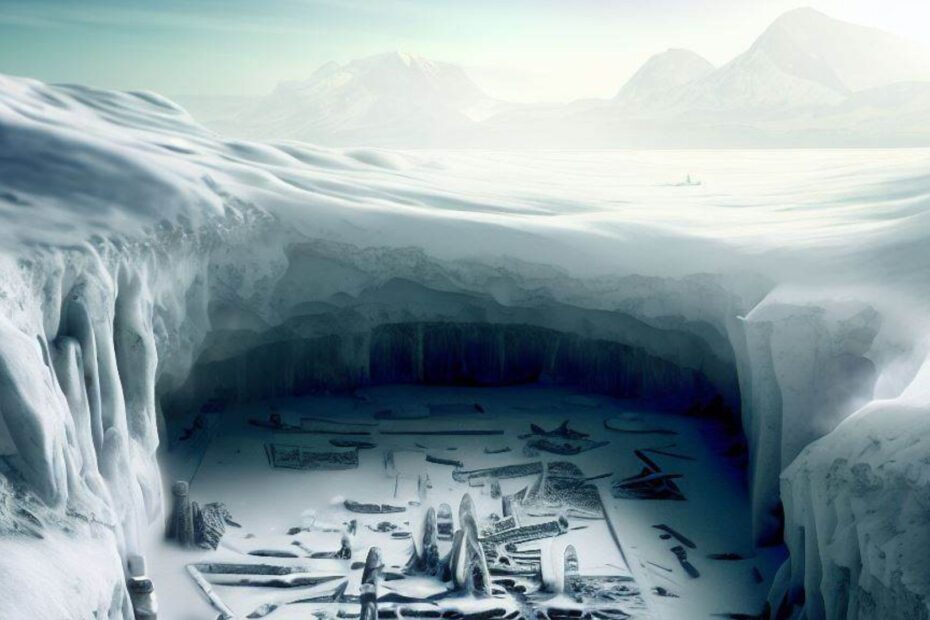Introduction
Did you know that beneath the frigid expanses of Antarctica, there might be traces of ancient civilizations? It sounds outlandish but stick with me as we embark on a journey to explore the mysteries of the frozen continent.
Antarctica, often overlooked in discussions about ancient civilizations, may hold captivating secrets that challenge our understanding of human history.
Unlocking the Secrets of Antarctica
Antarctica, the coldest, windiest, and driest continent, appears to be an inhospitable wasteland covered in ice up to a mile thick. But what if I told you that this frozen wilderness may have once been a bustling hub of ancient activity?
Over the years, various theories and hypotheses have emerged, suggesting that Antarctica was home to civilizations we can hardly imagine.
Satellite imagery, unique structures, and controversial interpretations have fueled these theories.
Though met with skepticism, they continue to captivate the imagination. What if there’s more to Antarctica’s icy landscape than meets the eye?
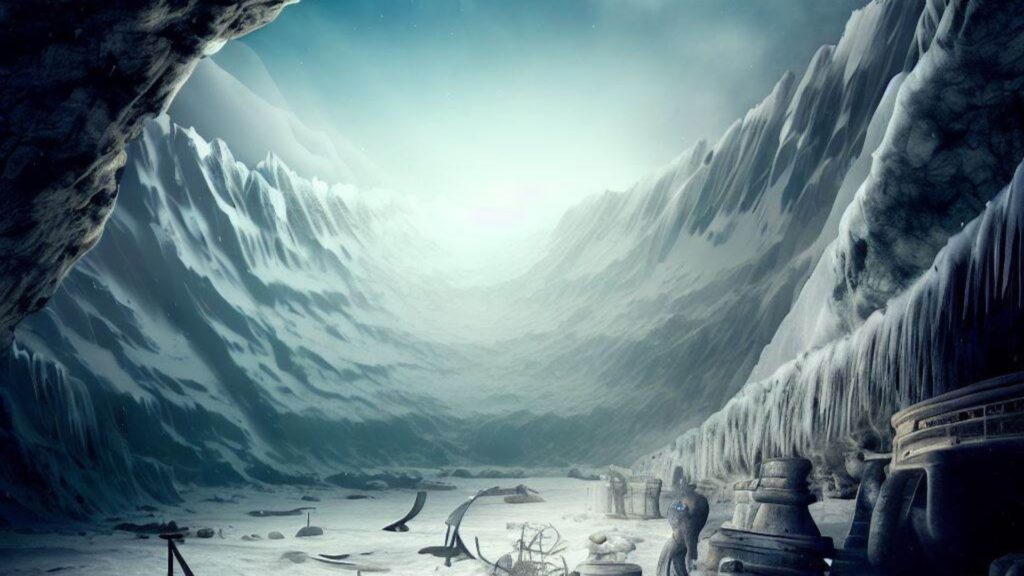
Ancient Enigmas Frozen in Time
Let’s delve into some of the most intriguing pieces of evidence and unravel the enigmatic story of Antarctica’s potential ancient civilizations.
The Unlikely Discovery
At first glance, the idea of ancient advanced civilizations thriving in the icy wilderness of Antarctica seems implausible. After all, Antarctica is known for its extremely cold temperatures, harsh winds, and the desolation of its icy landscapes.
It appears to be the least likely place one would associate with human habitation or cultural development.
However, when we delve deeper into the geological and climatic history of Antarctica, intriguing possibilities emerge. Our current understanding tells us that Antarctica has been covered in ice for approximately 34 million years.
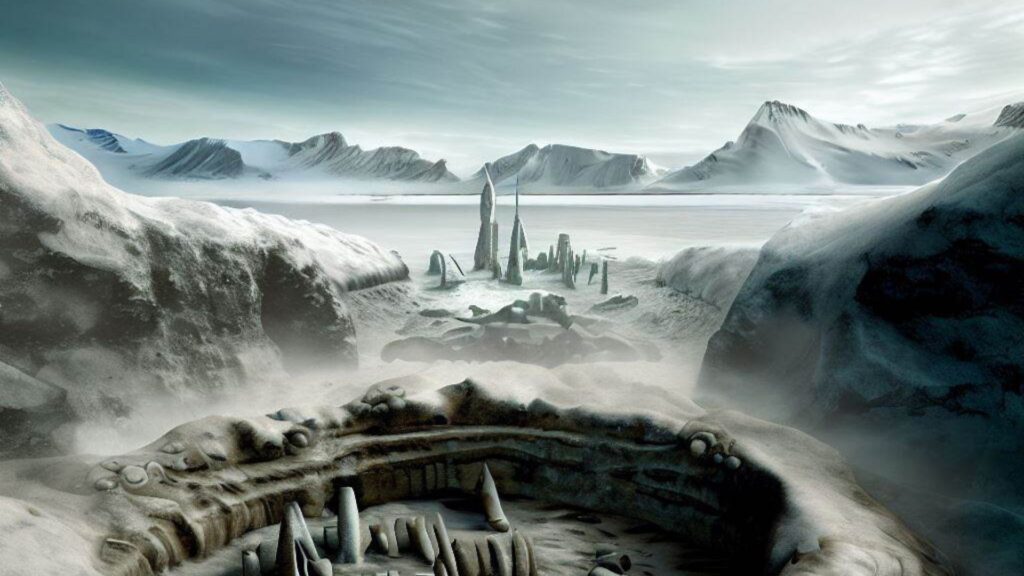
Ice core samples
This information is supported by extensive research and ice core samples that provide a glimpse into the continent’s climatic past.
These ice core samples, drilled deep into the Antarctic ice sheet, offer a valuable record of past climates and changes in the environment. They have helped scientists unravel the mysteries of Antarctica’s history.
The data collected from these ice cores suggests that while there have been fluctuations in the extent of the ice cover due to global climate cycles, Antarctica has predominantly been icy for millions of years.
This leads us to question: How could an ancient civilization have thrived in a landscape that has been an icy wasteland for such an extensive period?
The challenges posed by the icy conditions, along with the absence of any substantial evidence of human presence, make it difficult to conceive of thriving ancient civilizations in Antarctica.
However, it is important to note that there are hypotheses suggesting that parts of Antarctica might have experienced ice-free and warmer periods millions of years ago.
Factors such as geothermal heat and changes in Earth’s orbit could have contributed to temporary ice melt and relatively hospitable conditions in certain regions.
These hypotheses, while speculative, are based on scientific research and theories. They propose that Antarctica might have been a more habitable place during ancient times, potentially supporting the existence of ancient civilizations.
The notion of ancient advanced civilizations in Antarctica challenges our conventional understanding of history.
It raises thought-provoking questions about the adaptability of human societies and the potential for cultural development in the most unlikely of places.
As exploration and scientific advancements continue to shed light on Antarctica’s past, we may uncover surprising truths about the ancient secrets buried beneath its frozen surface.
Controversial Clues: The Piri Reis Map

One controversial clue that raises eyebrows is the Piri Reis map, drawn in 1513 by Ottoman Admiral and cartographer Piri Reis.
The map depicts parts of Europe, Africa, and the Americas with surprising accuracy for its time.
But what makes it truly intriguing is that it seems to depict the northern coastline of Antarctica, a landmass officially discovered only in 1820.
Could this map be evidence of an advanced ancient civilization that once thrived in Antarctica?
If you’re intrigued by the possibility of advanced civilizations predating the existence of humans, you’ll find further fascinating exploration in the article titled “Did Advanced Civilizations Exist Before Humans?”.
The Great Sphinx and Ancient Alignments

The mysteries deepen as we examine the Great Sphinx and the awe-inspiring Great Pyramids of Giza.
The weathering patterns on the Sphinx suggest that it might have been weathered by water, indicating an age far older than traditionally believed.
If the weathering occurred before Egypt became a desert, it would mean that the monument was already ancient by the time the first pharaoh took the throne.
Who built it, and how did an ancient civilization achieve such remarkable precision in the construction of the Great Pyramids?
Some theories propose that these architectural marvels were facilitated by extraterrestrial entities whom ancient civilizations perceived as gods.
The ancient astronaut theory suggests that advanced technology, knowledge, and spiritual understanding were handed down from celestial visitors.
While this theory remains speculative, the celestial alignments found in the structures of the Great Pyramid, such as the narrow shafts aimed at specific stars, raise intriguing questions about ancient astronomical knowledge or potential assistance from a more advanced civilization.

Dwarka: Gateway to the Mystical Past
Let’s turn our attention to Dwarka, a city that holds a significant place in Hindu mythology. According to legend, Dwarka, which translates to the “Gateway to Heaven,” was established by Lord Krishna, revered as the eighth Avatar of Lord Vishnu. Could the legend of Dwarka be more than just a myth?
Astounding discoveries shed light on this mystical city. Abundant pottery shards from various eras were found, with some dating back around 7,500 years ago, predating the expected timeline of the Mahabharata.
Radiocarbon dating of wood samples from Dwarka revealed an ancient age that challenged historians’ timelines. The city became a Pandora’s box of questions, hinting at the possibility of ancient civilizations existing long before previously thought.
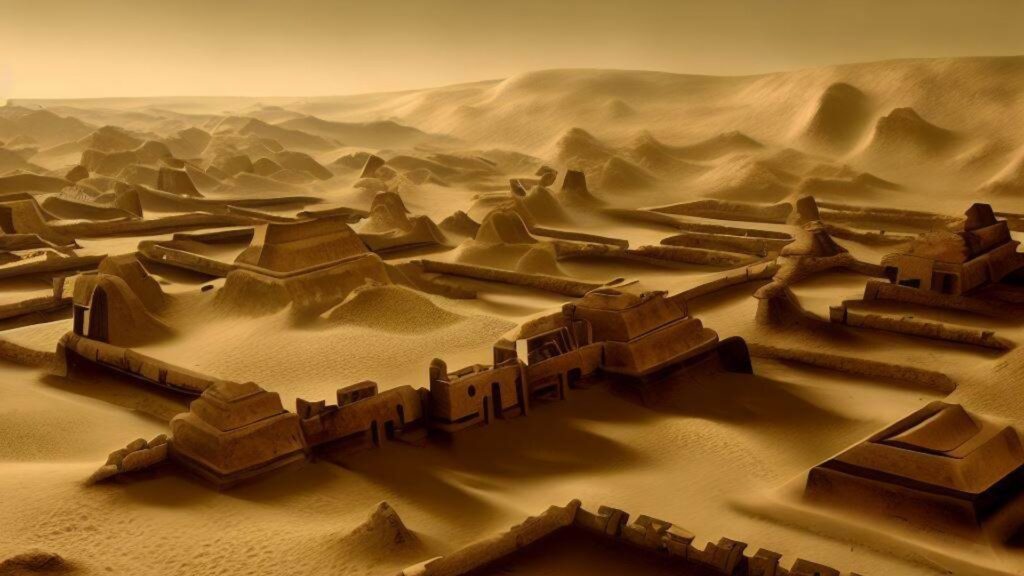
The Enigmatic Harappans
As we explore ancient civilizations, we cannot overlook the enigmatic Harappan civilization, which thrived in the Indus Valley around 5,000 years ago. Known for their advanced urban planning and architecture, the Harappans continue to baffle historians and archaeologists.
Their cities were meticulously laid out with remarkable precision, boasting a grid system akin to modern cities. The absence of a deciphered script keeps much of their literature and culture out of our grasp.
However, their binary decimal system for weights and the legacy of their practices in subsequent cultures indicate their advanced understanding.

Unraveling the Tapestry of the Past
While these theories, including those involving ancient aliens, venture into the realm of speculation, they highlight our enduring fascination with ancient civilizations.
As our understanding of the past evolves, we can’t help but wonder what startling connections and revelations await us.
Ancient advanced civilizations in Antarctica might seem like a fantastical tale, but when we explore the evidence and connect the dots, a different picture emerges.
It challenges our preconceived notions and invites us to reevaluate history. The mysteries of Antarctica, with its potential ancient civilizations, open doors to new possibilities and remind us of the vast, complex tapestry of human existence.
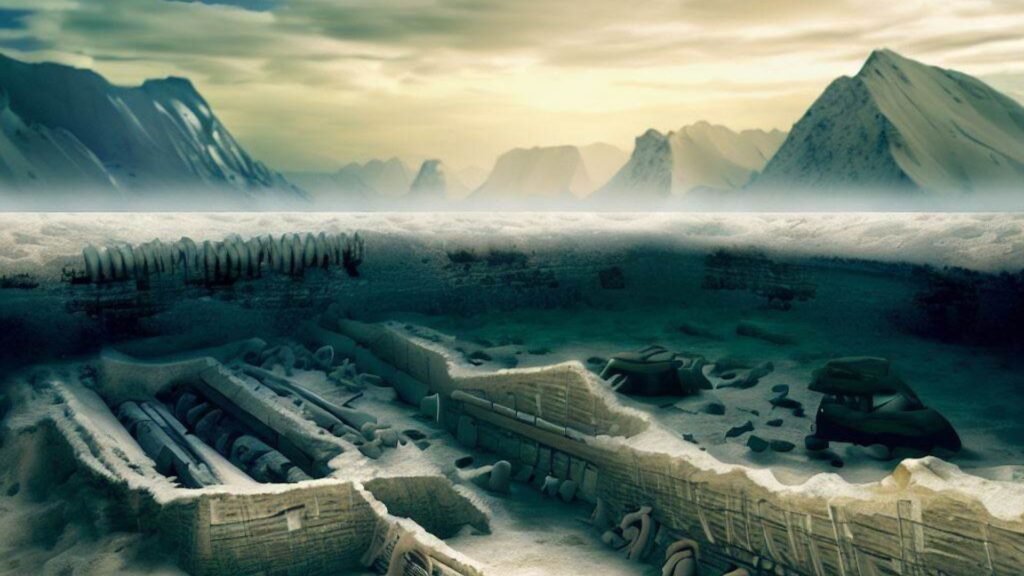
Conclusion
The frozen continent of Antarctica holds secrets that defy our expectations. Though shrouded in ice and seemingly inhospitable, it might be the key to unraveling the mysteries of ancient advanced civilizations.
From controversial maps and celestial alignments to submerged cities and enigmatic script, Antarctica challenges our understanding of history.
As we continue to explore, question, and delve deeper into the past, we may discover that ancient civilizations were far more advanced and interconnected than we ever imagined.
The icy enigma of Antarctica beckons us to uncover the truth hidden beneath its frozen surface and invites us to reconsider the rich tapestry of our shared human history.
To delve even deeper into the fascinating topic of ancient advanced civilizations and their enigmatic existence, you can explore an in-depth article titled “Unveiling the Enigma of Ancient Advanced Civilizations.”
This captivating article provides a comprehensive exploration of the subject, shedding light on the mysteries of ancient civilizations and their potential connection to Antarctica.
From controversial maps and celestial alignments to submerged cities and enigmatic scripts, it offers valuable insights into the captivating world of our ancient past.

